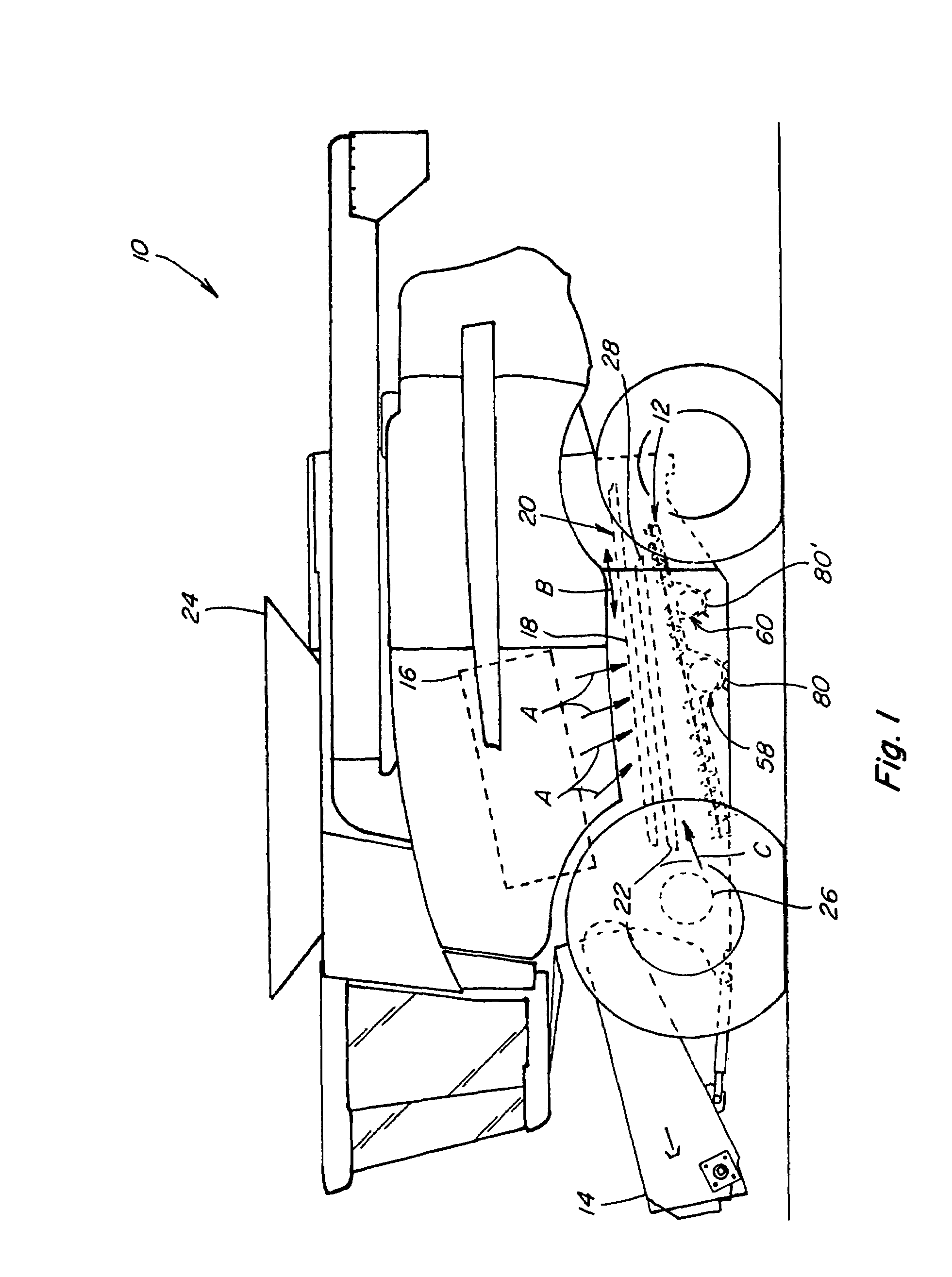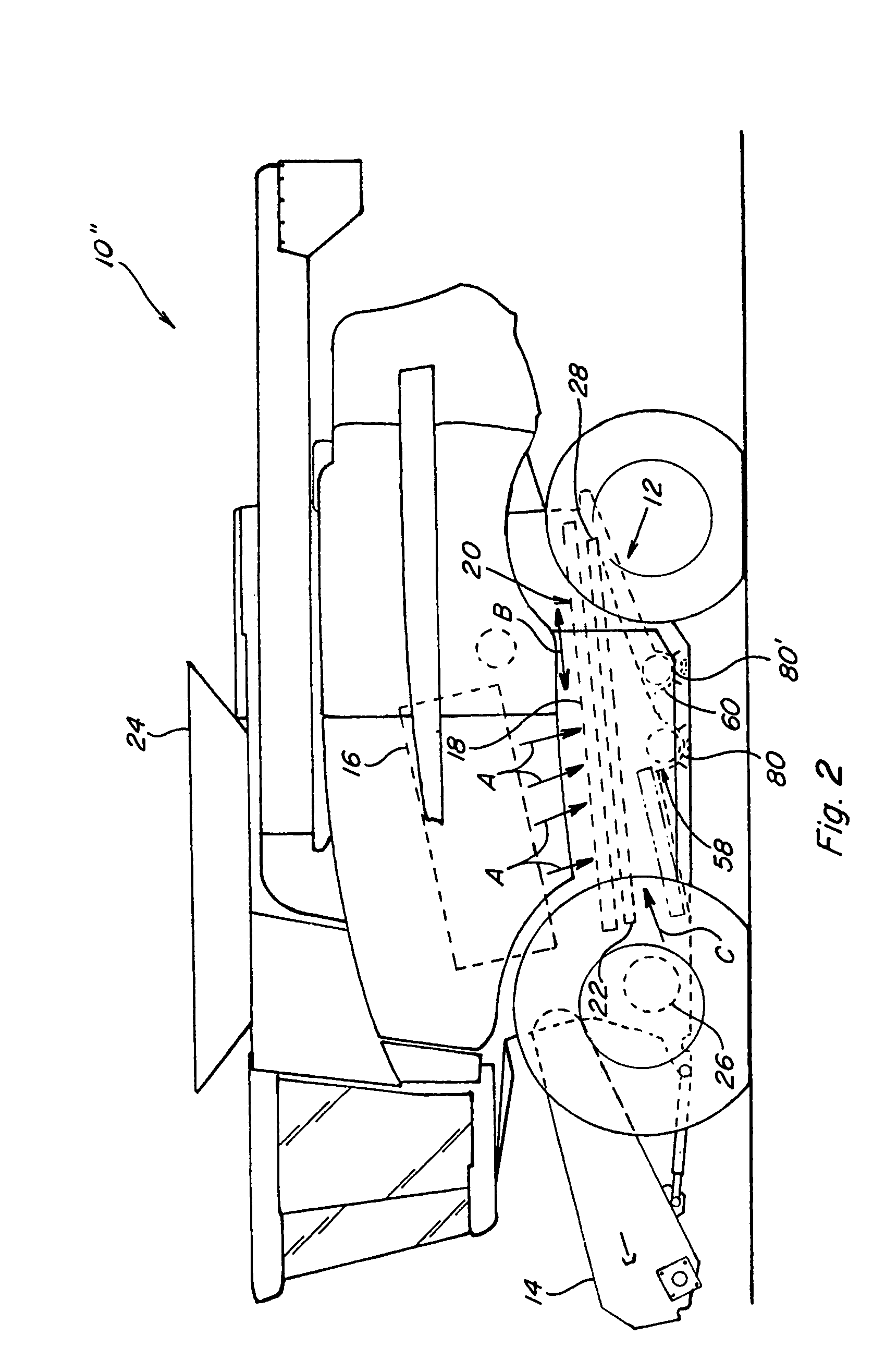Auger trough clean-out door
a technology for cleaning out auger troughs and auger troughs, which is applied in the field of auger troughs and, can solve the problems of limited access to certain areas, inability to clean out the auger troughs, and the clean out of the clean grain auger troughs and the clean tailings auger troughs, etc., and achieves the effects of easy reinstallation, effective effect, and severe build-up
- Summary
- Abstract
- Description
- Claims
- Application Information
AI Technical Summary
Benefits of technology
Problems solved by technology
Method used
Image
Examples
Embodiment Construction
[0035]Referring now to the drawings, wherein like numbers refer to generally like items or features, FIGS. 1 and 2 depict generally similar agricultural combines 10 and 10″ that include similar, but somewhat different, respective clean grain and tailings conveying systems 12 and 12″, each of which conveying systems 12 and 12″ include clean grain auger trough and tailings auger trough constructions that have associated therewith auger trough clean-out doors according to the present invention.
[0036]Combines 10 and 10″ are of conventional, well known construction, each including a feeder house 14 on a front end thereof, to which is connectable a header (not shown), operable to sever a swath of crops from a field as the combine is moved forwardly thereover and to convey the severed crops to feeder house 14. Feeder house 14 includes an internal conveying system (not shown), for conveying the crops upwardly and rearwardly into the bodies of the combines 10 and 10″, into an inlet of a sepa...
PUM
 Login to View More
Login to View More Abstract
Description
Claims
Application Information
 Login to View More
Login to View More - R&D
- Intellectual Property
- Life Sciences
- Materials
- Tech Scout
- Unparalleled Data Quality
- Higher Quality Content
- 60% Fewer Hallucinations
Browse by: Latest US Patents, China's latest patents, Technical Efficacy Thesaurus, Application Domain, Technology Topic, Popular Technical Reports.
© 2025 PatSnap. All rights reserved.Legal|Privacy policy|Modern Slavery Act Transparency Statement|Sitemap|About US| Contact US: help@patsnap.com



